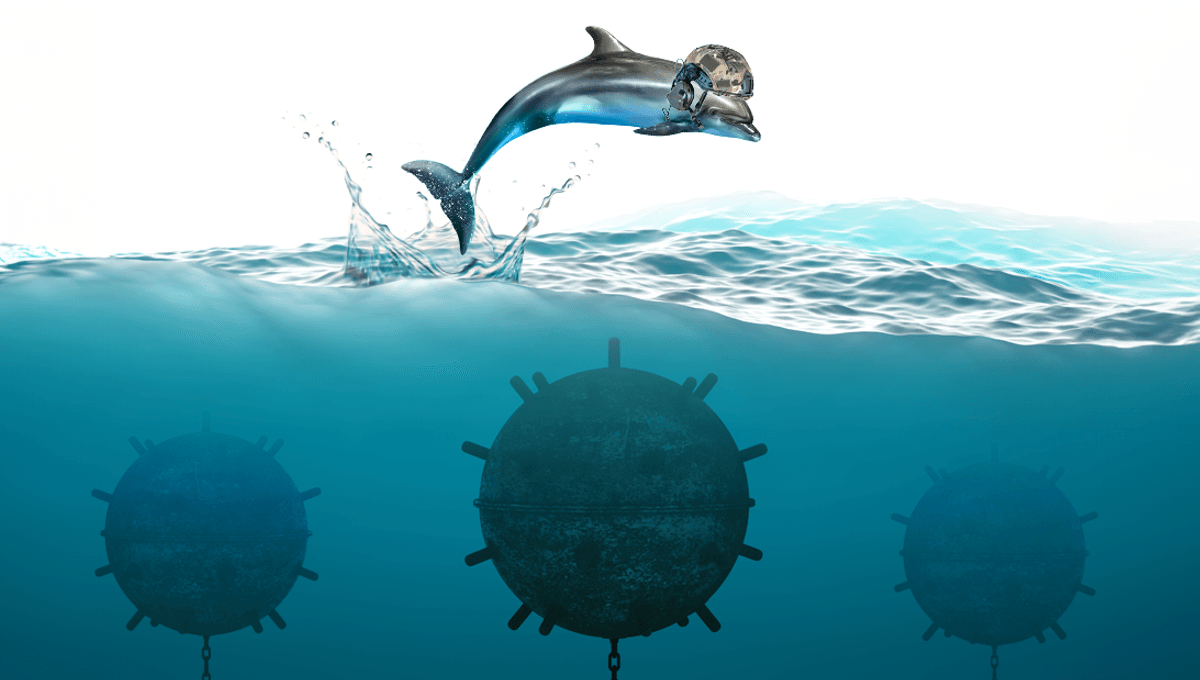
Dolphins have various reputations based on their incredible intelligence. They are often seen as friendly, inquisitive, and often playful aquatic mammals, but behind that popular image is an animal that learns quickly, has a talent for mimicry, and demonstrates both self-awareness and strong problem-solving skills.
It’s therefore no wonder dolphins, along with other marine mammals, are still used by militaries across the world for various purposes, including defending nuclear submarine bases. In fact, the US military have dolphins at King’s Bay Naval Submarine Base in Georgia and at Naval Base Kitsap, near Seattle, where these marine mammals help protect a quarter of the country’s existing nuclear arsenal. Who knew Flipper had such a varied resume?
The US Navy started examining different species of dolphin back in 1959 when they, along with sea lions and later other marine species, such as sea turtles, seabirds, and various sharks and rays, were tested for their abilities. This included their sensory and physical capabilities, as well as their ability to be trained. As you can imagine, not every species is as trainable as others (side-eyes the sharks), and not all of them were useful for the military’s aims, so over the years, the menagerie of potential recruits was whittled down to mostly bottlenose dolphins and California sea lions.
These training efforts were conducted by the Navy’s Marine Mammal Program (NMMP). By the 1980s, there were more than 100 dolphins living in naval facilities across the US, operating with a military budget of over $8 million. Dolphins were trained to carry cameras in their mouths, to deliver messages, and to even locate enemy divers. Similarly, sea lions were taught how to retrieve mines from the seabed, while beluga whales patrolled waters and searched for threats.
During the Vietnam War, dolphins were even deployed to Cam Ranh Bay, in southeast Vietnam, where they conducted underwater surveillance and protected military boats from enemy swimmers. The animals stationed there went by the names Garth, John, Slan, Tinker, and Toad. Between 1986 and 88, six dolphins helped escort Kuwaiti oil tankers through the Persian Gulf, and then again, in 2003, other dolphins helped coalition forces clear mines from the port of Umm Qasr, Iraq.
But why are dolphins so valuable for these operations? Well, it comes down to a mix of factors related to their intelligence, physical capabilities, and overall sociability. Dolphins have evolved to be able to map their environment through echolocation – the ability to “see” through soundwaves that they create by clicking and then interpreting the “echoes” as they bounce off objects.
These clicks aren’t produced by the animals’ mouths; instead they are made by pushing air through their “phonic lips”, which are connected to their nasal passages. As air passes through the nasal passage and past these lips, it causes the surrounding tissue to vibrate, creating the sound. Dolphins can create complex sounds with different frequencies and waveforms that can produce incredibly detailed “pictures” of their surrounding environment, including murky or difficult conditions where human-made technologies would struggle.
This makes them exceptionally good at finding objects like mines in shallow waters or in cluttered harbors. At the same time, dolphins can also dive hundreds of feet below the surface and do not suffer any of the physical limitations or risks that humans do (such as “the bends”).
Despite the tactical value, the subject of military dolphins is nevertheless a controversial one. There are serious ethical concerns surrounding the use and exploitation of dolphins within this context. Critics and animal rights movements have raised questions about how these cetaceans, as well as sea lions, are kept, how they have a lack of autonomy, and how they are effectively coerced to perform duties they do not understand in potentially dangerous contexts.
Today, the US has around 85 bottlenose dolphins and a smaller number of sea lions being trained by the NMMP. Russia is also known to have had its own history of training marine mammals, including dolphins, for military purposes, and this country has likely stepped up its training program again. In 2014, when Russia annexed Crimea, it seized Ukraine’s military dolphins and then purchased more a year later.
Between 2019 and 2023, a suspected Russian-trained “spy” beluga whale wearing a harness for a Go-pro camera was seen swimming around Norway. The animal was so familiar with humans that it reportedly played fetch with Norwegian locals. The body of this potential spy was found in Risavika Bay in Southern Norway in August this year. At the time of writing, there was no clear cause of death.
Regardless of your views on whether the use of these animals within military settings is good or bad, they will likely remain a feature, albeit it a quiet and often overlooked one, of military programs for a time to come.
Source Link: Military Dolphins Still Protect Around A Quarter Of The US’s Nuclear Arsenal